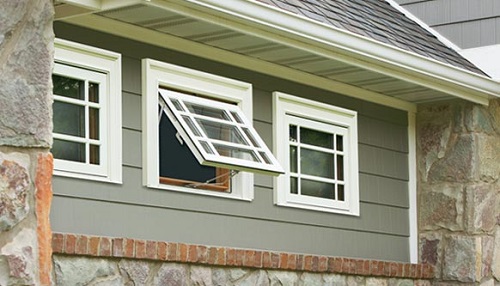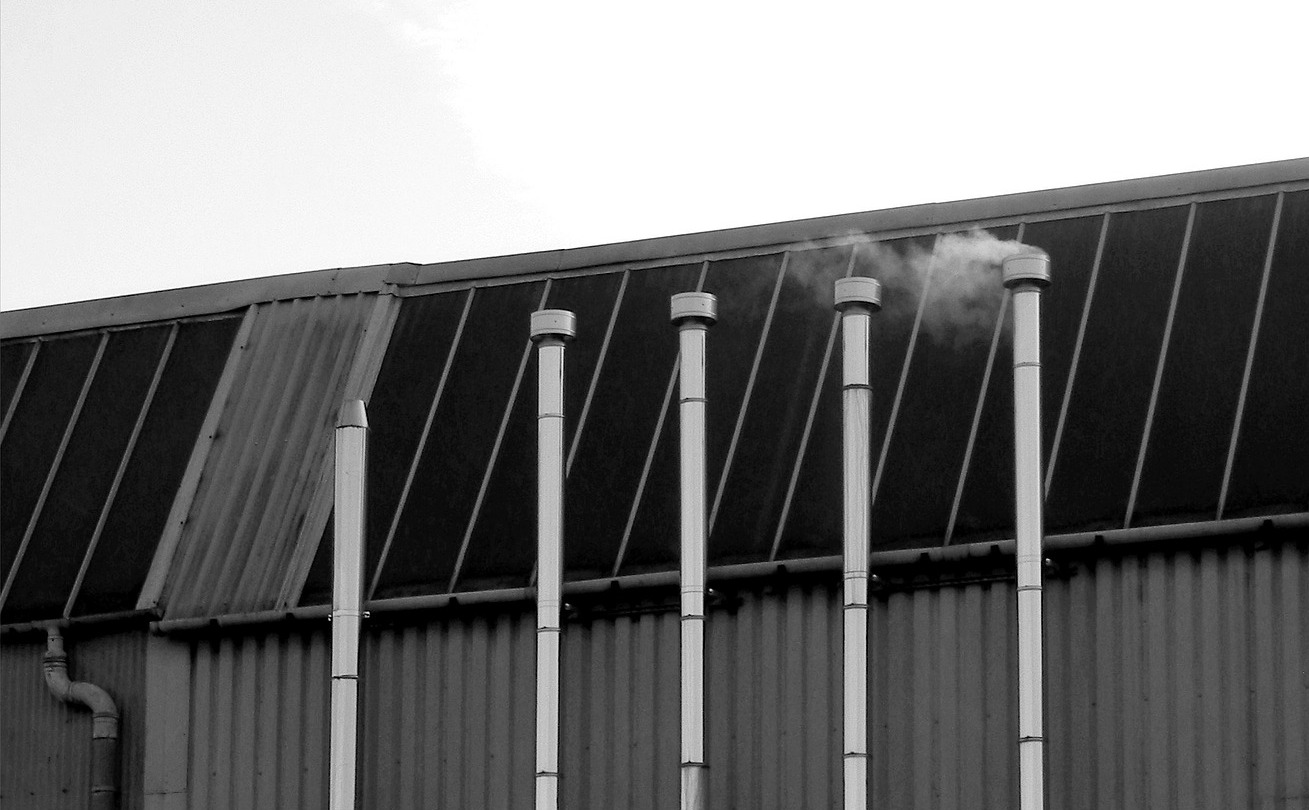Types of window

|

|

|
Windows are openings fitted with glass to admit light and allow people to see out. They are often openable to allow ventilation. Although the historic use of glass dates back to the Romans, glass windows only became common domestically in England in the early-17th century, gradually becoming more versatile and widespread as plate glass processes were perfected during the Industrial Age.
For more information see: Window.
There are a number of ways of classifying window types:
Contents |
[edit] Frame material
[edit] Type of glass
- Acrylic.
- Annealed glass.
- Fire-resistant glass.
- Float glass.
- Fully tempered glass.
- Glass brick.
- Heat soaked tempered glass.
- Heat strengthened glass.
- Insulated glazing units.
- Laminated glass.
- Low-emissivity glass (Low-E glass).
- Polycarbonate.
- Self-cleaning glass.
- Stained glass.
- Toughened glass.
- Wired glass.
For more information see: Glass.
[edit] Type of glazing
For more information see: Windows.
[edit] Cavity fill
- Vacuum.
- Argon.
- Krypton.
- Xenon.
For more information see: Windows.
[edit] Overall design
- Bay: Multi-panel windows that project in front of the external wall line, supported by a sill height wall.
- Bow: A curved bay window.
- Bullseye: A circular window.
- Clerestory: Bands of windows across the tops of buildings that allow natural light in without compromising privacy or security.
- Curtain wall: A non-structural cladding systems generally associated with large, multi-storey buildings.
- Display window: Intended for the display of products or services on sale within a building.
- Dormer: A small roofed structure that projects outwards from the main pitched roof of a building.
- Glass mullion system: Sheets of tempered glass held in position by clamps and joined by a structural silicone sealant or by metal patch plates
- Multi-lite: Windows glazed with small panes of glass separated by glazing bars, or muntins.
- Patent glazing: A non-load bearing, two-edge support cladding system.
- Picture window: A large fixed window that lets in the maximum amount of light and provides external views.
- Roof window: A window that is in the same plane as the surrounding roof, and has a minimum pitch of 15 degrees.
- Rooflight / skylight: A dome light, lantern light, skylight, ridge light of glazed barrel vault installed on an upstand, so it is not in the same plane as the surrounding roof.
- Sidelight: Positioned beside a door or main window.
- Toplight: These are usually above doors.
- Transom window: A horizontal window that is commonly mounted above a door or another window to let in more light.
- Storm glazing. Temporary external glazing system.
- Fanlight. Glazed area above a door.
For more information see: Windows.
[edit] Method of opening
- Awning: Hinged at the top and opened outwards.
- Bi-fold: Made up of a number of individual sashes, usually 2, 3 or 4, hinged together.
- Casement: An opening window fixed to the frame by hinges along one of its edges.
- Fixed light: A window that is fixed in place and cannot be opened.
- Louvre: A series of parallel pieces of glazing that are hung on central pivots.
- Pivot: Hung on one hinge at centre points on each of two opposite sides allowing the window to revolve when opened.
- Sidehung: A variation on a casement window, side opening controlled by tracks and slides.
- Tilt and slide: Tilts inwards at the top and slides horizontally behind the fixed pane.
- Tilt and turn: Include a mechanism that allows them to tilt inwards from one edge or to open inwards from one side.
- Topguided: Tracks and slides enable the top to slide downwards whist the bottom opens out.
- Vertical slider / sash: Glass is fitted in ‘sashes’ (moveable panels) that slide vertically past each other.
For more information, see Domestic windows.
[edit] Window Energy Rating
The Window Energy Ratings (WER) is a scale developed by the British Fenestration Ratings Council (BFRC) to measure the thermal performance of windows. The BFRC label indicates the rating of the window on a scale running from A+ (the most energy efficient) to G (the least efficient).
For more information, see Window Energy Rating
[edit] Style
See: Architectural styles.
[edit] Related articles on Designing Buildings Wiki.
- Angular selective shading systems.
- Architectural styles.
- Bespoke window.
- Bay window.
- Birds and building collisions.
- Bullseye window.
- Clerestory.
- Crittall metal windows.
- Domestic windows.
- Double glazing.
- Double glazing v triple glazing.
- Easily accessible window.
- Fenestration.
- Furnishings.
- Glass manifestation.
- Glass.
- Glazing.
- Historic steel-framed windows.
- Jamb.
- Laced window.
- Light well.
- Louvre (or louver).
- Plate glass.
- Sash windows.
- Security glazing.
- Stained glass.
- Triple glazing.
- Types of blinds.
- Types of door.
- Window and door schedules.
- Window Energy Rating.
- Window frame.
- Window parts.
- Windows.
- Yorkshire Lights.
Featured articles and news
RTPI leader to become new CIOB Chief Executive Officer
Dr Victoria Hills MRTPI, FICE to take over after Caroline Gumble’s departure.
Social and affordable housing, a long term plan for delivery
The “Delivering a Decade of Renewal for Social and Affordable Housing” strategy sets out future path.
A change to adoptive architecture
Effects of global weather warming on architectural detailing, material choice and human interaction.
The proposed publicly owned and backed subsidiary of Homes England, to facilitate new homes.
How big is the problem and what can we do to mitigate the effects?
Overheating guidance and tools for building designers
A number of cool guides to help with the heat.
The UK's Modern Industrial Strategy: A 10 year plan
Previous consultation criticism, current key elements and general support with some persisting reservations.
Building Safety Regulator reforms
New roles, new staff and a new fast track service pave the way for a single construction regulator.
Architectural Technologist CPDs and Communications
CIAT CPD… and how you can do it!
Cooling centres and cool spaces
Managing extreme heat in cities by directing the public to places for heat stress relief and water sources.
Winter gardens: A brief history and warm variations
Extending the season with glass in different forms and terms.
Restoring Great Yarmouth's Winter Gardens
Transforming one of the least sustainable constructions imaginable.
Construction Skills Mission Board launch sector drive
Newly formed government and industry collaboration set strategy for recruiting an additional 100,000 construction workers a year.
New Architects Code comes into effect in September 2025
ARB Architects Code of Conduct and Practice available with ongoing consultation regarding guidance.
Welsh Skills Body (Medr) launches ambitious plan
The new skills body brings together funding and regulation of tertiary education and research for the devolved nation.
Paul Gandy FCIOB announced as next CIOB President
Former Tilbury Douglas CEO takes helm.
UK Infrastructure: A 10 Year Strategy. In brief with reactions
With the National Infrastructure and Service Transformation Authority (NISTA).






















